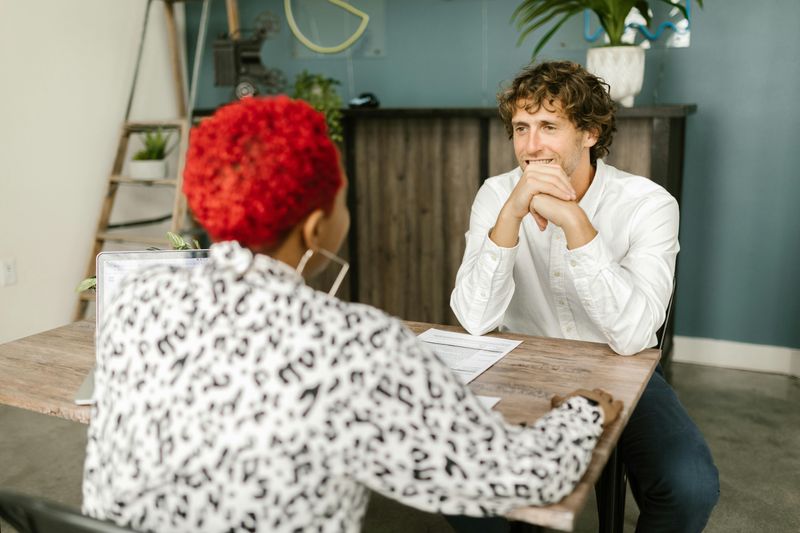10 Powerful Ways to Become a Better Listener and Strengthen Every Relationship

Becoming a great listener isn’t just about hearing words—it’s about truly understanding what someone means and feels. When you listen with empathy and attention, you create space for trust, connection, and deeper relationships.
Whether it’s with a partner, friend, or coworker, strong listening skills can transform every interaction. Here are 10 powerful, practical ways to become a better listener and strengthen every relationship in your life.
1. Give Your Full, Undivided Attention

Multitasking might feel productive, but it sends a terrible message when someone is trying to talk to you. Scrolling through your phone or glancing at your computer screen tells the speaker their words don’t really matter. True listening means clearing away every distraction.
Put your phone on silent and turn it face-down. Close your laptop and turn your body toward the person speaking. Your physical presence communicates respect and care in ways words simply can’t.
When people feel they have your complete focus, they open up more honestly. This simple act transforms ordinary conversations into meaningful connections that strengthen trust over time.
2. Pause Your Response Until They Finish

Interrupting someone mid-sentence is one of the fastest ways to make them feel unheard and unimportant. Even if you think you know what they’re going to say, resist the urge to jump in. Let them complete every thought, every sentence, every pause.
Sometimes people need a moment of silence to gather their next words. That awkward pause isn’t your cue to start talking—it’s their thinking time. Respecting this space shows incredible patience and maturity.
When you hold back your response until they’re truly finished, you give them permission to express themselves fully. This practice alone can dramatically improve how connected and understood people feel around you.
3. Demonstrate You’re Listening Through Active Engagement

Silent listening can sometimes feel cold or distant, even when you’re paying attention. Small gestures like nodding, maintaining eye contact, and offering brief verbal cues make a huge difference. Simple phrases like “I see,” “That makes sense,” or “Go on” reassure the speaker.
These tiny signals create a feedback loop that encourages the person to keep sharing. They know you’re tracking with them, not zoning out or mentally preparing your grocery list.
Active engagement doesn’t mean constant interruption—it means showing up emotionally and physically. Your body language and small acknowledgments prove you’re genuinely invested in what they’re saying, creating safety and openness in the conversation.
4. Be Mindful of Your Facial Expressions

Your face tells a story even when your mouth stays closed. Rolling your eyes, frowning, or looking bored can shut down a conversation faster than any words. People read your expressions constantly, often subconsciously, to gauge whether it’s safe to keep talking.
Keep your face open, relaxed, and neutral, especially when hearing something difficult or surprising. A soft expression invites honesty, while a tight or judgmental look builds walls instantly.
Smiling at appropriate moments or showing concern when needed demonstrates empathy. Being intentional about your facial cues helps the speaker feel accepted and valued, even before you say a single word in response to their story.
5. Accept the Speaker’s Perspective as Valid

You don’t have to agree with someone to acknowledge their feelings are real. When people share their experiences, they’re not asking you to adopt their viewpoint—they’re asking you to recognize it exists. Dismissing or minimizing their perspective damages trust quickly.
Saying things like “I can see why you’d feel that way” or “That makes sense from your experience” validates their reality. Even when you see things differently, honoring their truth builds bridges instead of barriers.
This approach doesn’t mean abandoning your own beliefs. It means creating space where both perspectives can coexist peacefully, fostering respect and deeper understanding that strengthens the relationship significantly over time.
6. Express Support as You Listen

Listening isn’t just about absorbing information—it’s about offering emotional support throughout the conversation. Simple phrases like “That sounds really tough” or “I’m so sorry you’re going through this” can mean everything to someone struggling.
Your empathy reminds them they’re not alone in their experience. These small expressions of care create emotional safety, encouraging deeper sharing and vulnerability.
Support doesn’t require grand gestures or perfect words. Sometimes a gentle “I’m here for you” or “Thank you for trusting me with this” is exactly what someone needs to hear. These moments of compassion transform ordinary listening into healing connection.
7. Ask Open-Ended Questions

Yes-or-no questions shut conversations down quickly, while open-ended questions invite people to share more deeply. Instead of asking “Did that upset you?” try “How did that make you feel?” The difference is enormous.
Questions like “What happened next?” or “Can you tell me more about that?” signal genuine curiosity. They give the speaker permission to explore their thoughts and feelings more fully, leading to richer, more meaningful exchanges.
This technique transforms you from a passive listener into an active participant who genuinely cares about understanding their story. People remember conversations where they felt truly heard, and thoughtful questions are a powerful tool for creating those memorable moments.
8. Ask if They Want Problem-Solving or Just to Share

One of the biggest listening mistakes is jumping straight into fix-it mode when someone shares a problem. Sometimes people want solutions, but often they just need someone to hear them out. Assuming which one they need can backfire badly.
A simple question like “Do you want help solving this, or do you just need to vent?” shows incredible emotional intelligence. It respects their autonomy and clarifies how you can best support them in that moment.
When you ask first instead of assuming, you avoid the frustration of offering unwanted advice. This approach honors their needs and shows you’re listening not just to respond, but to truly understand and support them.
9. Check Your Understanding and Summarize

Ending a conversation without confirming you understood correctly can lead to confusion and frustration later. Paraphrasing what you heard—like saying “So you’re saying you felt overlooked at the meeting”—shows you were truly listening and gives them a chance to correct misunderstandings.
Summarizing key points demonstrates respect and care. It proves you weren’t just waiting for your turn to talk, but actively processing their words.
This practice also helps you retain information better and shows the speaker their message landed. When people know they’ve been understood, they feel valued and respected, which builds stronger, more trusting relationships that can weather challenges and grow deeper over time.
10. Notice the Unspoken Messages in Body Language

Words only tell part of the story when someone talks to you. Experts say that more than half of communication happens through body language, facial expressions, and tone of voice rather than actual words.
When you pay attention to how someone sits, whether they make eye contact, or if their arms are crossed, you gain valuable clues about their true feelings. Someone might say they’re fine, but their slumped shoulders and lack of eye contact tell a different story.
Training yourself to read these nonverbal signals helps you understand the complete message. Watch for changes in posture, hand movements, and voice pitch during conversations. This awareness shows you care enough to notice what isn’t being said out loud, making others feel truly seen and understood.

Comments
Loading…